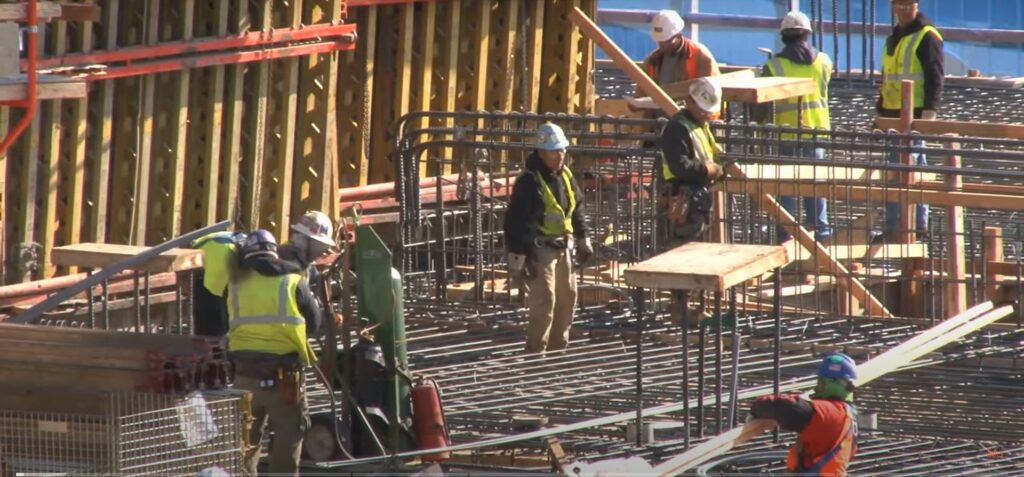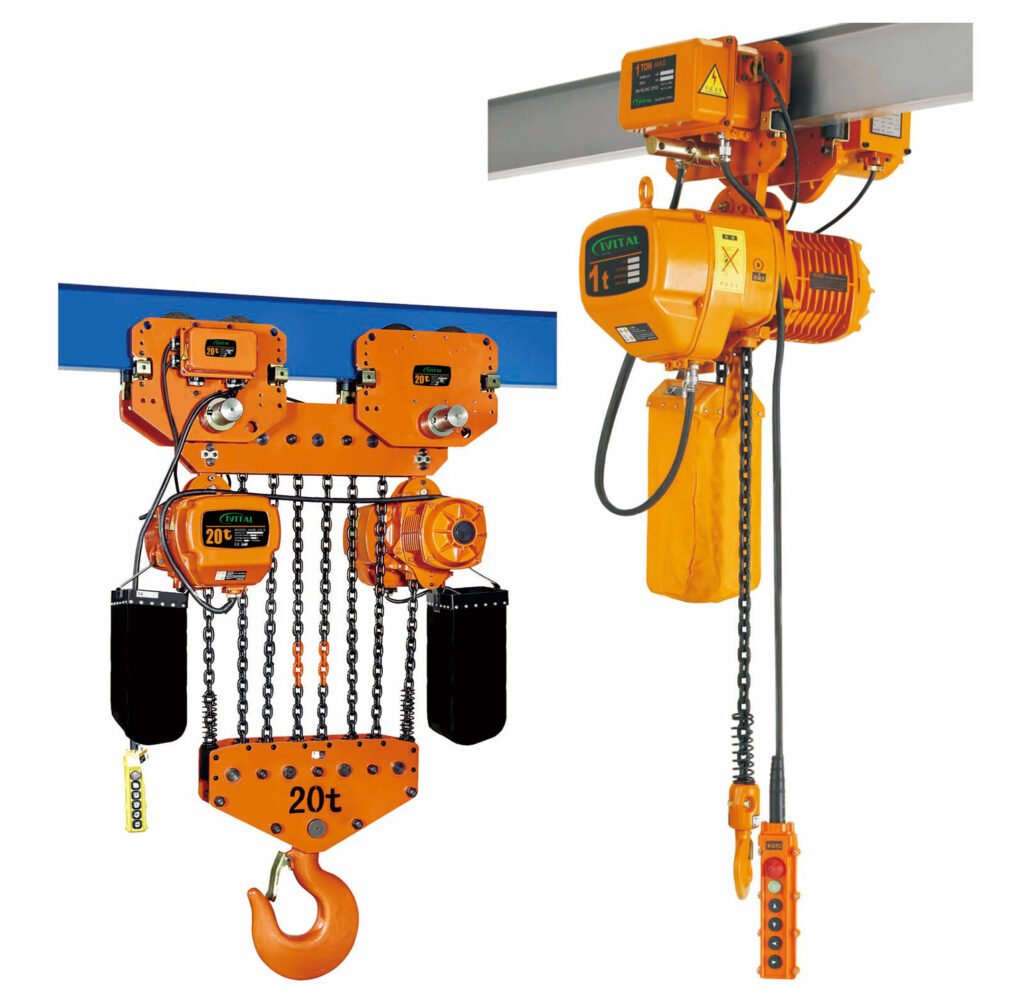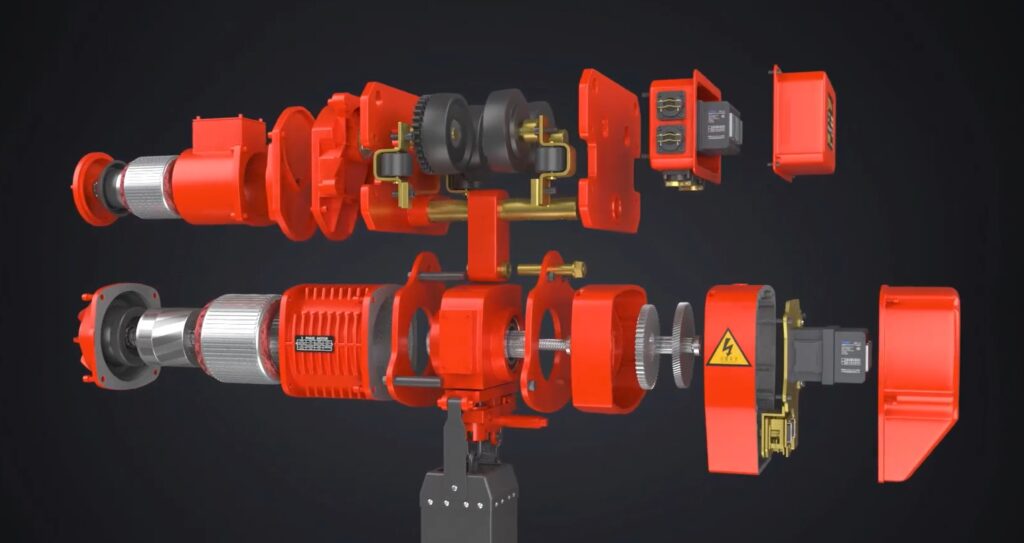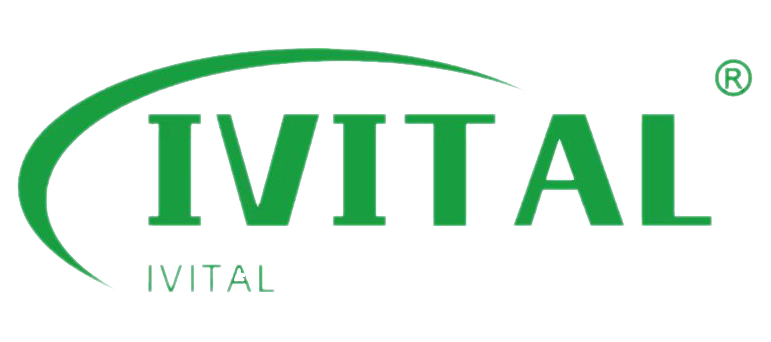Construction projects require efficient lifting solutions to reduce downtime and improve productivity. Electric chain hoists offer an advanced method for handling heavy loads, reducing manual labor, and speeding up operations. Let’s explore how these hoists can streamline construction processes and enhance overall efficiency.
Electric chain hoists significantly reduce the time and effort required to lift and move heavy loads. With the push of a button, operations that might have required multiple manual laborers can be completed quickly and with minimal effort, enhancing productivity. This increased efficiency leads to faster project completion, reduced costs, and improved safety on construction sites. By automating lifting operations, construction managers can ensure smoother workflows and focus on other critical tasks.

Electric chain hoists are transforming the construction industry by not only increasing efficiency but also enhancing safety. Let’s dive deeper into the specific advantages these hoists bring to the table.
Which is an advantage of using a motorized chain hoist?
A motorized chain hoist can make lifting heavy loads much easier. But why is it so beneficial in industries that need efficient lifting?
A motorized chain hoist reduces manual effort while lifting heavy loads, boosting productivity and safety. It makes tasks quicker and safer, benefiting workers and businesses alike.

Increased Productivity
Electric chain hoists reduce the time and physical effort required for lifting. Workers can move heavy objects faster, leading to better efficiency and reduced fatigue.
High Load Capacity
Unlike manual hoists, motorized versions can handle much heavier loads, often up to 30 tons. This makes them ideal for construction, manufacturing, and other industrial environments.
Ease of Use
With a motor doing the heavy lifting, workers don’t have to use their physical strength. This reduces the chance of injuries and allows one person to perform tasks that might need a team with manual hoists.
Precision and Safety
Modern motorized chain hoists come with features like overload protection and dual braking systems. These ensure that heavy loads are lifted safely, making operations smoother and safer.
Cost Efficiency
Electric chain hoists save on labor costs and reduce the time spent on lifting tasks. Their durability also means they require less maintenance, lowering long-term operational costs.
The Most Efficient Chain Hoist for Your Needs
Choosing the right chain hoist depends on your unique needs. Are you looking for versatility, speed, or durability? Let’s explore the most efficient options available.
The most efficient chain hoist depends on your application. Models with variable speed control, durability, and precision, such as the IVITAL Variable Speed Hoist, are top contenders for most industries.

1. IVITAL Variable Speed Electric Chain Hoist
- Features: Offers variable speed control (2–26 FPM) for precision. Compatible with wireless remote systems for easy operation.
- Capacity: 1/2 to 3 tons.
- Efficiency: Perfect for tasks requiring precise load positioning and flexible lifting speeds. Its ergonomic controls and trolley compatibility make it user-friendly.
- Best for: Manufacturing plants, assembly lines, and tasks requiring precision.
2. Harrington NER Electric Chain Hoist
- Features: Dual-speed variable frequency drive (VFD), corrosion-resistant nickel-plated chain, 10-year brake warranty.
- Capacity: 1/8 to 5 tons.
- Efficiency: Built for durability, smooth operation, and reliability in harsh conditions with safety features like Smart-Brake Technology.
- Best for: Harsh environments and applications needing long-term reliability.
3. Konecranes C-Series Electric Chain Hoist
- Features: Stepless inverter hoisting for smooth acceleration/deceleration, ergonomic design, and a long operational life (over 1 million cycles).
- Capacity: Up to 5 tons.
- Efficiency: Ideal for high-duty applications with minimal maintenance and long component lifespan.
- Best for: High-volume operations with frequent heavy lifting.
4. CM Lodestar VS Electric Chain Hoist
- Features: Smart technology for wireless programming and monitoring, variable speed control, lifetime warranty.
- Capacity: 1/8 to 3 tons.
- Efficiency: Offers advanced technology for robust performance, ensuring it is ready for evolving needs.
- Best for: Applications requiring smart control and high customization.
Factors to Consider When Choosing:
- Variable Speed Control: For tasks needing precise adjustments, hoists like the Starke VS and CM Lodestar VS are top choices due to their speed flexibility.
- Durability and Maintenance: Hoists with lifetime lubrication (Konecranes) or corrosion-resistant chains (Harrington) provide long-lasting efficiency.
- Application Needs: For heavy-duty work, hoists with a higher rating (H4 or above, like Harrington NER) offer the best reliability.
What Are the Key Components of an Electric Chain Hoist?
Have you ever wondered what makes an electric chain hoist work so efficiently? Let’s explore the essential parts that ensure smooth and safe lifting operations.
An electric chain hoist consists of components like the motor, chain, load hook, and brake system, all working together to lift heavy loads safely and efficiently.

1. Motor
The motor is the primary power source of the hoist. It converts electrical energy into mechanical force, driving the gearbox or sprocket mechanism that moves the lifting chain.
2. Chain
The chain, made from high-strength alloy steel, is the medium that lifts the load. It wraps around a sprocket, connecting the load hook to the hoist body, ensuring secure lifting.
3. Load Hook
The load hook directly engages with the material being lifted. Equipped with a safety latch, it prevents the load from accidentally detaching during operation.
4. Hoist Body or Frame
The hoist body houses the motor, gearbox, and internal components. Designed to withstand the stresses of repeated lifting, it ensures the hoist functions safely under heavy load.
5. Gearbox (or Sprocket Mechanism)
The gearbox reduces the motor’s high-speed rotation to a lower speed, increasing torque to allow the hoist to lift heavier loads efficiently.
6. Brake
The brake system holds the load in place when lifting is paused or if power is interrupted, ensuring that the load does not drop unexpectedly.
7. Control Panel / Control Mechanism
This includes the electrical controls and switches, such as a push-button pendant or remote control, that allow operators to easily manage the lifting and lowering of loads.
8. Chain Container
The chain container (or chain bag) encloses the unused portion of the chain during operation, preventing tangles and maintaining an organized workspace.
9. Limit Switches
Limit switches stop the hoist from exceeding safe upper and lower limits, providing protection for both the hoist and the load.
Summary:
Electric chain hoists offer significant benefits in construction, from increasing efficiency to enhancing safety. By automating lifting processes, they reduce labor costs and ensure faster project completion. Embracing electric hoists on construction sites ensures a smoother, safer, and more productive workflow for construction managers and planners.


